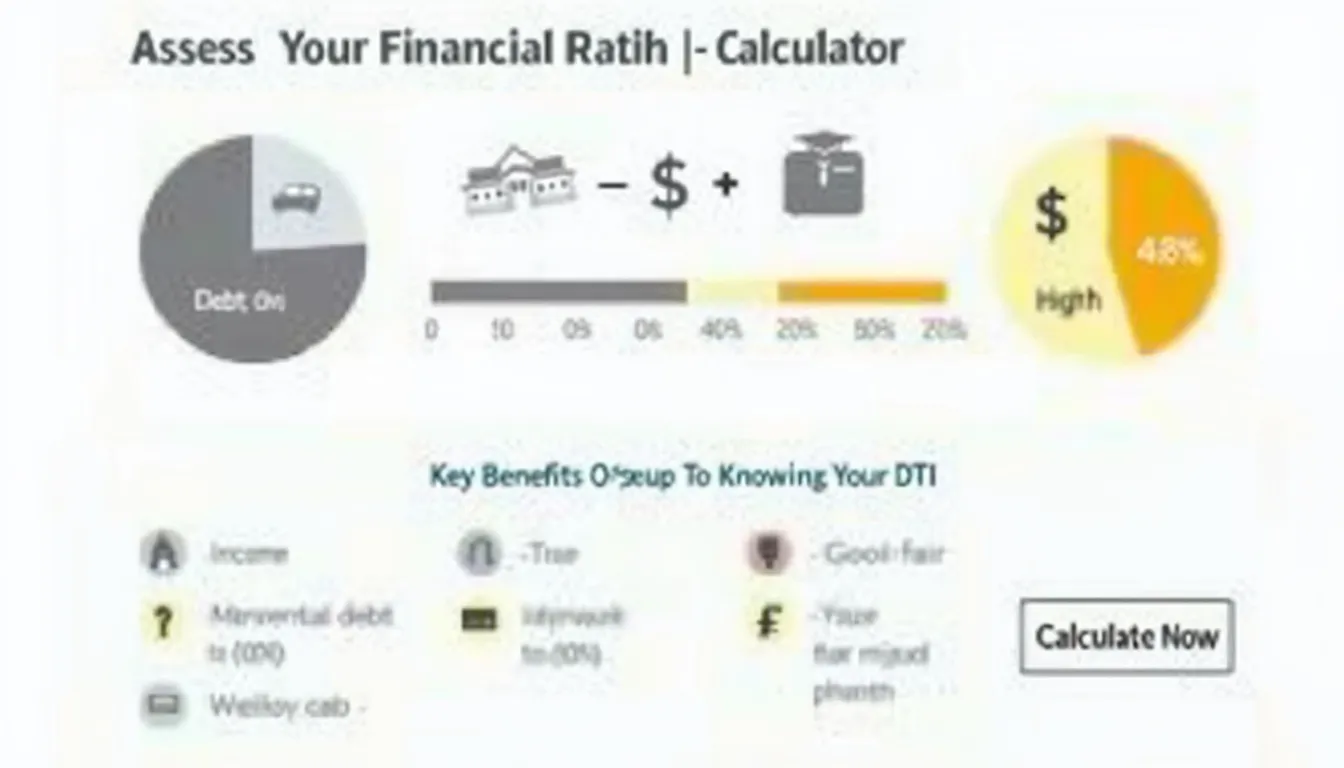Debt to Income Ratio Calculator
Is this tool helpful?
How to use the tool
- Enter Monthly Debt Payments. Add every loan and credit-card minimum. • Example 1: $950. • Example 2: $1,250.
- Enter Gross Monthly Income. Use earnings before taxes. • Example 1: $5,100. • Example 2: $3,800.
- Press “Calculate” to see your DTI percentage and the interpretation label.
Formula used
$$DTI = rac{\text{Monthly Debt Payments}}{\text{Gross Monthly Income}}\times100\%$$
Example calculations
- Scenario A: $950 debt ÷ $5,100 income = 0.1863 ⇒ 18.63 %.
- Scenario B: $1,250 debt ÷ $3,800 income = 0.3289 ⇒ 32.89 %.
Quick-Facts
- Qualified mortgages must stay below 43 % DTI (CFPB, 2023).
- Fannie Mae flags borrowers for manual review above 36 % DTI (Selling Guide, 2023).
- The median DTI on U.S. closed mortgages was 36 % in 2022 (FHFA Annual Report, 2023).
- VA loans allow up to 41 % DTI with compensating factors (VA Handbook, 2023).
FAQ
What is a good debt-to-income ratio?
Aim for 36 % or lower; lenders start tightening terms above that threshold (Fannie Mae Selling Guide, 2023).
Why do lenders care about DTI?
DTI gauges repayment capacity; “DTI above 43 % raises significant ability-to-repay concerns” (CFPB Final Rule, 2023).
Does DTI include living expenses?
No. It counts contractual debts—loans, credit cards—but excludes groceries, utilities, and insurance (HUD, 2023).
How can I lower my DTI quickly?
Pay down revolving balances, consolidate high-interest loans, and boost income through overtime or side gigs (FDIC Money Smart, 2023).
How often should I recalculate my DTI?
Update it after any new loan, pay-off, or income change and at least annually (FINRA, 2023).
Does my credit score affect DTI?
No. Score measures payment history; DTI measures cash-flow risk. Lenders evaluate both separately (Experian, 2023).
What DTI will FHA loans accept?
Automated approval goes up to 50 % with strong credit; manual underwriting caps at 43 % (HUD 4000.1, 2023).
Is DTI based on gross or net income?
Use gross monthly income; lenders apply pre-tax figures for consistency (Freddie Mac Guide, 2023).
Important Disclaimer
The calculations, results, and content provided by our tools are not guaranteed to be accurate, complete, or reliable. Users are responsible for verifying and interpreting the results. Our content and tools may contain errors, biases, or inconsistencies. Do not enter personal data, sensitive information, or personally identifiable information in our web forms or tools. Such data entry violates our terms of service and may result in unauthorized disclosure to third parties. We reserve the right to save inputs and outputs from our tools for the purposes of error debugging, bias identification, and performance improvement. External companies providing AI models used in our tools may also save and process data in accordance with their own policies. By using our tools, you consent to this data collection and processing. We reserve the right to limit the usage of our tools based on current usability factors.







